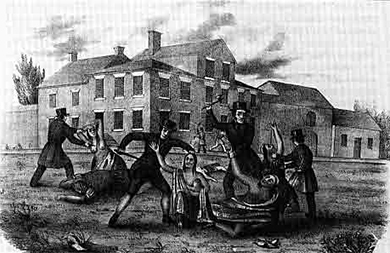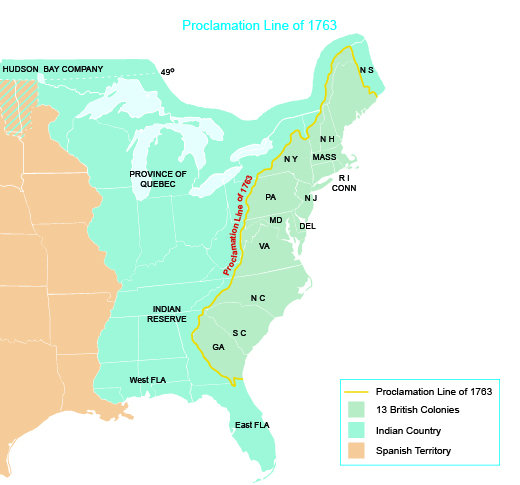| << Chapter < Page | Chapter >> Page > |

Visit Explore PAhistory.com to read the full text of Benjamin Franklin’s “Benjamin Franklin, An Account of the Paxton Boys’ Murder of the Conestoga Indians, 1764.”
Pontiac’s Rebellion and the Paxton Boys’ actions were examples of early American race wars, in which both sides saw themselves as inherently different from the other and believed the other needed to be eradicated. The prophet Neolin’s message, which he said he received in a vision from the Master of Life, was: “Wherefore do you suffer the whites to dwell upon your lands? Drive them away; wage war against them.” Pontiac echoed this idea in a meeting, exhorting tribes to join together against the British: “It is important for us, my brothers, that we exterminate from our lands this nation which seeks only to destroy us.” In his letter suggesting “gifts” to the natives of smallpox-infected blankets, Field Marshal Jeffrey Amherst said, “You will do well to inoculate the Indians by means of blankets, as well as every other method that can serve to extirpate this execrable race.” Pontiac’s Rebellion came to an end in 1766, when it became clear that the French, whom Pontiac had hoped would side with his forces, would not be returning. The repercussions, however, would last much longer. Race relations between Indians and whites remained poisoned on the frontier.
Well aware of the problems on the frontier, the British government took steps to try to prevent bloodshed and another costly war. At the beginning of Pontiac’s uprising, the British issued the Proclamation of 1763, which forbade white settlement west of the Proclamation Line , a borderline running along the spine of the Appalachian Mountains ( [link] ). The Proclamation Line aimed to forestall further conflict on the frontier, the clear flashpoint of tension in British North America. British colonists who had hoped to move west after the war chafed at this restriction, believing the war had been fought and won to ensure the right to settle west. The Proclamation Line therefore came as a setback to their vision of westward expansion.

Great Britain’s newly enlarged empire meant a greater financial burden, and the mushrooming debt from the war was a major cause of concern. The war nearly doubled the British national debt, from £75 million in 1756 to £133 million in 1763. Interest payments alone consumed over half the national budget, and the continuing military presence in North America was a constant drain. The Empire needed more revenue to replenish its dwindling coffers. Those in Great Britain believed that British subjects in North America, as the major beneficiaries of Great Britain’s war for global supremacy, should certainly shoulder their share of the financial burden.

Notification Switch
Would you like to follow the 'U.s. history' conversation and receive update notifications?